Rats belong to the kingdom Animalia and are classified under the phylum Chordata, which encompasses all vertebrates. Within the class Mammalia, rats are further categorized into the order Rodentia, specifically within the suborder Myomorpha and the superfamily Muroidea.
Call Us when you Need Help!
Rat
Rats, belonging to the genus Rattus, are a diverse group of rodents that have adapted to a wide range of environments across the globe, excluding Antarctica. Known for their intelligence and social nature, rats are divided into various species, with the most notable being the Norway rat (Rattus norvegicus) and the black rat (Rattus rattus). While often perceived as pests due to their association with urban environments and disease transmission, rats also play vital roles in ecosystems, contributing to nutrient cycling and serving as prey for numerous predators. Their adaptability and reproductive success have allowed them to thrive in human-dominated landscapes, resulting in significant challenges related to population control and public health concerns.
. Rats have also made their mark in culture and literature, often symbolizing dual themes of resilience and pestilence. Their representation ranges from the tragic tale of the “Pied Piper of Hamelin” to positive portrayals in modern media, such as Pixar’s Ratatouille. This cultural significance reflects the complex relationship between humans and rats, highlighting both the fears and fascination associated with these creatures.
. Despite their ecological importance, many rat species face threats from habitat loss and competition with invasive species. Conservation efforts are critical to preserve the diversity of rat species and mitigate the impact of human activities on their populations. As such, rats embody both the challenges and opportunities presented by urbanization and environmental change, warranting a nuanced understanding of their role in our world.
Classification
Taxonomy of Rats
Rats belong to the kingdom Animalia and are classified under the phylum Chordata, which encompasses all vertebrates. Within the class Mammalia, rats are further categorized into the order Rodentia, specifically within the suborder Myomorpha and the superfamily Muroidea. The family Muridae includes various rodent species, and the genus Rattus contains the true rats, including the well-known Norway rat (Rattus norvegicus) and the black rat (Rattus rattus)
Species and Subspecies
The common species of rats include:
- Rattus norvegicus (Norway rat or brown rat)
- Rattus rattus (Black rat or house rat)
- Rattus argentiventer (Ricefield rat)
- Rattus hoffmanni (Hoffmann’s Sulawesi rat)
- Rattus lutreolus (Australian swamp rat)
- Rattus osgoodi (Osgood’s Vietnamese rat)
- Rattus xanthurus (Northeastern Xanthurus rat) . The fancy rat (Rattus norvegicus domestica) is a domesticated form of the Norway rat, selectively bred for various characteristics and markings that differentiate them from their wild counterparts. This domestication has led to the emergence of numerous varieties with distinct phenotypes, including differences in color, markings, and physical traits.
Breeds and Varieties
As rat breeding and showing developed, various clubs established standards for different rat varieties, which include characteristics such as coat color, eye color, ear type, and size. The American Fancy Rat and Mouse Association (AFRMA) is one of the organizations that set these standards, helping to classify rats into specific varieties. For instance, a rat may be described as a “Dumbo Black Hooded Rex Dwarf Manx,” indicating its ear type (Dumbo), color (Black), markings (Hooded), coat type (Rex), size (Dwarf), and absence of a tail (Manx)
Phenotype vs. Genotype
It’s important to distinguish between phenotype (the observable characteristics of the rat) and genotype (the genetic makeup). A rat’s appearance may lead one to classify it incorrectly if the pedigree or history is not known. This complexity emphasizes the need for standardized definitions and classifications within the breeding community
Importance of Classification
Understanding the classification of rats is vital for breeding, conservation, and research purposes. It allows breeders to maintain healthy gene pools and recognize potential health issues related to specific physical traits. The classification systems help in promoting better breeding practices and preserving the unique characteristics of various rat varieties
Specific Habitats by Species
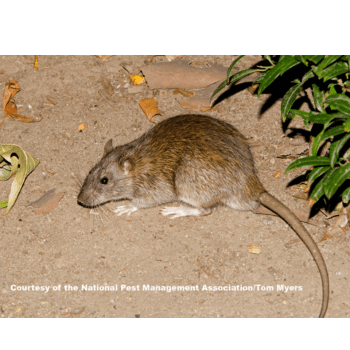
Rattus norvegicus (Norway rat or brown rat)
Large, robust rat with blunt snout and small ears. Brownish-gray fur, pale underside. Originated in Asia, now worldwide. Prefers ground level, basements, sewers. Excellent swimmer, primary urban pest species.
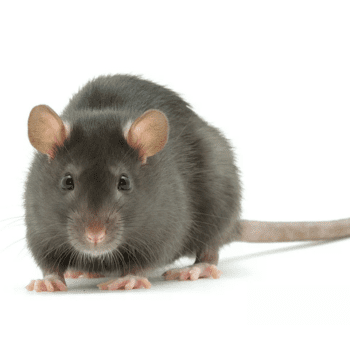
Rattus rattus (Black rat or house rat)
Slender build with pointed snout, large ears, and long tail exceeding body length. Dark fur, lighter belly. Superior climber, inhabits upper floors, attics, trees. Major historical plague vector.
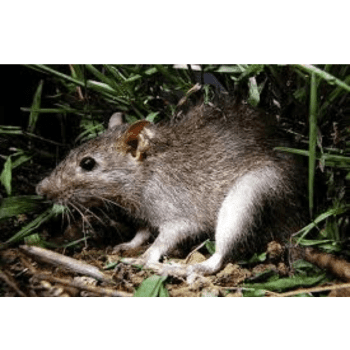
Rattus argentiventer (Ricefield rat)
Medium-sized rat with grayish-brown fur and silver-tipped guard hairs. Endemic to Southeast Asia. Primary agricultural pest in rice paddies, causing significant crop damage throughout monsoon regions.
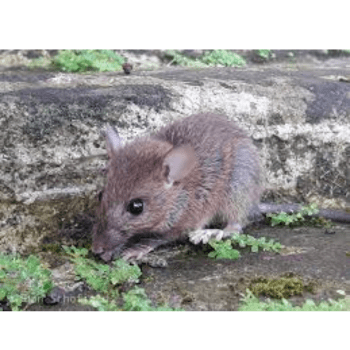
Rattus hoffmanni (Hoffmann’s Sulawesi rat)
Endemic to Sulawesi, Indonesia. Medium-sized with dark brown fur. Inhabits tropical forests at various elevations. Limited research available due to restricted geographic range and relatively recent scientific documentation.
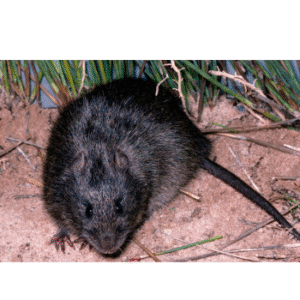
Rattus lutreolus (Australian swamp rat)
Native Australian species with dense, soft fur ranging from gray to reddish-brown. Inhabits wetlands, swamps, and coastal areas. Excellent swimmer, builds nests in reed beds and vegetation.
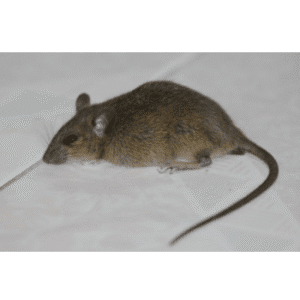
Rattus osgoodi (Osgood’s Vietnamese rat)
Endemic to Vietnam’s mountainous regions. Medium-sized with reddish-brown fur. Inhabits tropical forests at higher elevations. Limited ecological data available due to restricted distribution and ongoing taxonomic research.
Anatomy and Physiology
General Morphology
Rats, particularly the brown rat (Rattus norvegicus), exhibit a distinctive morphology characterized by a robust body, coarse fur that is typically brown or dark grey, and lighter underparts. Adult brown rats commonly weigh between 250 to 350 grams (9 to 12 oz), with exceptional individuals reported to reach weights of up to 900 to 1000 grams (32 to 35 oz), primarily in domestic settings
Sensory and Communication
Rats possess acute senses, particularly in olfaction and hearing, which are essential for their survival and social interactions. Their vocalizations are predominantly high-pitched, falling outside the range of human hearing, and they communicate through a variety of sounds. Contrary to common depictions in fiction, rats rarely emit squeaks unless distressed or threatened, with more typical vocalizations being subtle and often undetectable by human observers
Respiratory and Cardiovascular Systems
Rats have rapid respiratory rates, making traditional measurements challenging. Signs of respiratory distress, such as “snuffling,” can often indicate underlying health issues like infections. The cardiovascular system supports their high metabolic demands, with heart rates also being elevated, necessitating efficient oxygen transport and nutrient delivery throughout the body.
Thermoregulation
The tail of the rat plays a crucial role in thermoregulation. Studies indicate that the tail’s higher surface-area-to-volume ratio facilitates effective heat dissipation. It contains a greater vascularity compared to the abdomen, allowing for efficient thermal management, particularly during physical activity or in warm environments. The muscularization and coordinated movements of the tail also assist in maintaining proprioceptive balance and spatial orientation
Digestive System
The digestive anatomy of rats reflects their omnivorous diet. Their stomachs exhibit a unilocular-hemiglandular pattern, lacking a gall bladder, which is a shared characteristic among some rodent groups. This morphology aids in the efficient processing of various food types. The karyotype of rats includes 56 chromosomes, and variations in their dental structure can occur due to genetic mutations, influencing their dietary adaptations
Eroductive Anatomy
Rats have distinct reproductive systems with sexual dimorphism. Males generally display slightly larger body sizes than females. The reproductive anatomy is specialized for high reproductive rates, contributing to their status as prolific breeders in various environments.
Behavior and Ecology
Importance in Ecosystems
Rodents, including various species of rats, play a crucial role in maintaining the health of ecosystems. They serve as a significant food source for numerous predators, and their populations are particularly important for the survival of endangered species. For example, the endangered black-footed ferret relies heavily on healthy prairie dog populations, which are also rodents, for its sustenance. Additionally, rodents contribute to ecological processes by consuming insects, recycling nutrients in the soil to promote plant growth, and dispersing seeds. In balanced ecosystems, natural predators and interspecies competition help regulate rodent populations and their associated diseases. However, human activities that disrupt habitats can lead to changes in rodent communities, resulting in ecological imbalances and potential rodent-related problems
Social Behavior
Rats are inherently social animals, often found living in groups in the wild. They thrive on social interactions, both with their peers and with humans, which enrich their lives and well-being. Within their groups, rats exhibit a variety of behaviors, including wrestling and grooming, which should not be mistaken for aggression. To minimize conflicts, providing adequate space and opportunities for social interaction is crucial when housing rats together.
A bonded community of three to four individuals typically creates an ideal environment for these social creatures.
Diet and Nutrition
Rats are omnivorous and have the capability to digest a wide variety of foods. Despite their adaptability, the dietary choices of pet rats are often influenced by the offerings of pet food manufacturers, which can lead to unhealthy eating habits. It is essential for their diet to consist primarily of high-quality pelleted food, commonly referred to as ‘rat block’ or ‘rodent block’, which should make up 80% to 90% of their caloric intake. Unfortunately, many commercially available diets are high in fat and can lead to obesity, organ disease, and a weakened immune system if not balanced correctly.
Thus, while rats can consume a range of foods, it is crucial that their diet remains nutritionally complete to support their health.
Habitat and Behavior Adaptations
The ecological niches of different rat species significantly influence their behavior and diet. For instance, the brown rat prefers a carnivorous diet and is known to actively hunt various prey such as shrimp, insects, and even small mammals, while the house rat has adapted to human environments, consuming primarily stored grains. Habitat selection also affects social structures, with some species thriving in urban areas while others are more suited to natural environments. In cases where they are housed together, particularly intact males, ensuring ample space helps to mitigate territorial aggression, allowing for a more harmonious social structure within groups
Habitat and Distribution
Rats belong to the genus Rattus, which is widely distributed across the globe, excluding Antarctica. They inhabit various environments, from urban areas to rural landscapes, demonstrating significant adaptability to diverse ecological niches.
Natural Habitats
Tropical and Temperate Regions
Rats are also found in tropical and temperate regions, particularly within their native range that extends from temperate and tropical continental Asia to the Australia-New Guinea region. They thrive in diverse habitats, including scrub forests, grasslands, and rainforests. The adaptability of different species, such as the marsh rice rat (Oryzomys palustris), allows them to occupy a variety of ecological niches from wetlands to wooded areas
Coastal and Mediterranean Climates
Certain species prefer specific biomes, such as the coastal areas with Mediterranean climates, characterized by dense, spiny shrub vegetation. These habitats are usually maintained by periodic fires, which help preserve the ecological balance
Urban Habitats
Urban areas often provide ample food sources for rat populations, particularly in cities like New York, Boston, and Philadelphia, which have notable rodent infestations. Studies indicate that there may be as many rats in cities as there are people, although estimates vary widely. For instance, New York City’s rat population has been debated, with figures ranging from 250,000 to nearly 100 million
Social and Communication Habitats
Rats are known to form social groups and can communicate using various methods, including scent marking and visual signals. Their social structures often reflect a hierarchy, affecting resource access within their populations. This behavior is particularly prominent in urban settings where food resources are more plentiful, leading to more complex social dynamics.
Influence of Human Activity
Human activity has a profound impact on rat distribution and habitat use. Urban environments, with their aging infrastructure and waste accumulation, create ideal conditions for rat populations to thrive. Measures to control these populations include garbage regulation and targeted trapping, highlighting the ongoing relationship between human habitation and rat distribution
Cockroaches in Culture
Cockroaches have a long-standing relationship with human societies, often serving as symbols of resilience and adaptability, albeit in a predominantly negative context. Their presence in urban environments has led to their depiction as dirty pests in Western culture, frequently associated with uncleanliness and disease. Historical accounts, such as those by Pehr Osbeck in the 18th century, document the frequent sightings of cockroaches in bakeries, reinforcing their image as unwelcome intruders in human food sources
Symbolism and Representations
In popular culture, cockroaches are often utilized as metaphors for survival and endurance due to their hardiness and ability to thrive in various environments. This has led to their representation in literature, films, and art as creatures that embody fear, disgust, and the darker aspects of urban life
Cockroaches in Science and Research
Cockroaches have also been subjects in scientific studies, particularly in neurobiology and behavioral ecology, where they serve as models due to their simple rearing requirements and distinct behaviors. Research indicates that cockroaches possess complex social behaviors, challenging the stereotype of them as mere pests. Their involvement in scientific exploration extends beyond the laboratory; for instance, a cockroach named Nadezhda was sent into space, symbolizing both scientific curiosity and the intersection of nature and technology.
Cultural Perceptions Across the Globe
Different cultures have varied perceptions of cockroaches. In some cultures, they are viewed solely as pests, while in others, they are associated with medicinal properties or resilience. For example, in certain traditional practices, cockroaches have been used in folk remedies, indicating a more nuanced relationship with these insects in some societies. This divergence highlights the complexity of human attitudes toward cockroaches, reflecting broader themes of coexistence and conflict between humans and nature.
Health Implications
Cockroaches are more than just household nuisances; they pose significant health risks that can adversely affect human well-being. Their presence in homes can lead to unsanitary conditions and is associated with various health threats, particularly respiratory issues and allergies.
Disease Transmission
Beyond respiratory issues, cockroaches are recognized vectors for various pathogens. They can contaminate food and surfaces with harmful bacteria, including coliform, salmonella, staphylococcus, and streptococcus. By crawling through unsanitary environments such as garbage and sewers, cockroaches can transfer these pathogens to kitchen countertops and food products, leading to food poisoning and other gastrointestinal illnesses.
. The fecal matter of cockroaches can also spread bacteria, increasing the risk of diseases among residents in infested homes
Allergens and Respiratory Health
Cockroaches are known carriers of allergens that can trigger allergic reactions and exacerbate asthma symptoms, especially in sensitive individuals, such as children.
. Their feces, saliva, and body parts contain particles that can become airborne and inhaled, contributing to respiratory problems. Studies have indicated that about 28% of allergic patients test positive for cockroach allergens, in contrast to only 7.5% of non-allergic individuals, highlighting their impact on those with pre-existing allergies
. In urban environments, where cockroach infestations are more prevalent, the risk of developing asthma is notably higher. Research suggests that cockroaches may contribute to increased asthma rates, particularly among individuals living in inner-city areas.
. Furthermore, approximately three million Canadians suffer from asthma, with cockroach allergens being a significant contributing factor to this condition
Psychological and Social Impacts
The presence of cockroaches in residential or commercial properties can lead to significant psychological distress for inhabitants, including anxiety and fear related to health implications. Such infestations may diminish a household’s reputation, decrease customer satisfaction in businesses, and could even result in closure by health authorities due to health code violations.
. The stigma attached to cockroach infestations can impact social interactions and lead to social isolation for affected individuals and families.
Cockroach Control and Management
Controlling cockroaches is a multifaceted challenge due to their resilient nature and adaptability to various environments. Traditional methods, such as over-the-counter sprays, may often fall short against these pests, especially as many cockroach populations develop resistance to common insecticides. Therefore, effective cockroach management involves a comprehensive approach that combines chemical treatments with preventive measures.
Preventive Measures
Effective cockroach control necessitates more than extermination; it requires a holistic strategy. Preventive measures play a crucial role in minimizing the risk of infestation.
- Proper food storage, using airtight containers to prevent access.
- Regular cleaning to eliminate food residues and potential hiding spots.
- Sealing entry points to reduce access to indoor environments.
- Public education on cockroach biology and behavior to empower residents and business owners to take proactive steps
Community Involvement
In multi-family units, collaboration among residents, management staff, and pest control companies is vital for effective cockroach management. Residents are encouraged to maintain sanitary conditions, report infestations, and regularly clean their spaces. Management staff should address maintenance issues, such as fixing water leaks, which can provide essential resources for cockroaches. By eliminating food, water, and hiding places, infestations can be significantly reduced.
Monitoring and Identification
Monitoring the presence and distribution of cockroaches is the first step in any management program. Visual inspections are a straightforward method to identify potential infestations. Key areas for inspection include kitchens, bathrooms, and locations near food and water sources, using a flashlight to aid in the search. For more thorough monitoring, several tools can be employed:
- Jar traps: A simple method involving a baby food jar with a greased upper portion to trap cockroaches attracted to bait placed inside.
- Glue board traps: Strategically placed in areas where cockroaches are likely to frequent, such as kitchen cabinets and near garbage cans, these traps help assess infestation levels.
Integrated Pest Management
An Integrated Pest Management (IPM) approach is recommended to effectively manage cockroach populations.
- Sealing gaps in plumbing and structural elements.
- Reducing ambient moisture through improved ventilation and drainage.
- Conducting routine inspections and applying treatments as necessar
- . Furthermore, educating residents on proper sanitation practices is essential for interrupting the cockroach lifecycle and aiding in do-it-yourself control efforts
Chemical Control Methods
Chemical treatments may include traditional insecticides and Insect Growth Regulators (IGRs), which disrupt the growth and reproductive cycles of cockroaches. Unlike conventional insecticides, IGRs prevent pests from reaching maturity and thereby reduce population growth over time
Interaction with Humans
Rats have increasingly become popular as pets due to their social nature and intelligence. Unlike the common perception of rats as pests, domesticated rats can form strong bonds with their human caregivers. Proper husbandry is critical to ensure the health and happiness of pet rats, as many basic care needs are often overlooked, leading to diseases and suffering among these animals
Social Behavior
Rats are inherently social creatures that thrive in the company of others. They exhibit complex social interactions, including grooming, play fighting, and establishing a hierarchy within their group
. Rats are known to bond closely with their human owners as well, showing affection through behaviors such as licking and cuddling. They communicate their feelings through body language, vocalizations, and even subtle gestures. For instance, rats may “brux” (grind their teeth) when they are content or huddle together to indicate a sense of safety
Impact of Human Interaction
The quality of interaction between humans and rats plays a significant role in their overall well-being. Positive experiences and regular handling can help reduce stress levels and encourage the development of trust between rats and their owners Rats that experience social stress during their formative years may show behavioral issues later, affecting their relationships with both humans and other rats
10% Discount: Applied automatically for first-time bookings.
Conservation Status
Rats play a significant role in various ecosystems and exhibit a diverse range of species, some of which face significant threats to their survival. The International Union for Conservation of Nature (IUCN) has categorized numerous rat species on its Red List of Threatened Species, primarily due to habitat loss and declining populations. Out of the species assessed, several are classified into varying levels of concern.
Threatened Species
As of recent assessments, there are 16 rat species that are considered threatened with extinction.
Near Threatened
- Rattus elaphinus (Sula Archipelago rat)
- Rattus feliceus (Spiny Seram Island rat)
- Rattus jobiensis (Yapen rat)
Vulnerable
- Rattus hoogerwerfi (Hoogerwerf’s Sumatran rat)
- Rattus palmarum (Zelebor’s Nicobar rat)
- Rattus richardsoni (Glacier rat)
- Rattus satarae (Sahyadris forest rat)
- Rattus stoicus (Andaman rat)
- Rattus xanthurus (Northeastern Xanthurus rat)
Endangered
- Rattus burrus (Miller’s Nicobar rat)
- Rattus hainaldi (Hainald’s Flores Island rat)
- Rattus lugens (Mentawai Archipelago rat)
- Rattus montanus (Sri Lankan mountain rat)
- Rattus ranjiniae (Ranjini’s field rat)
- Rattus simalurensis (Simalur Archipelago rat)
- Rattus vandeuseni (Van Deusen’s rat) .
Ecological Importance and Risks
Rats are an integral part of their ecosystems, serving as both predators and prey. They contribute to nutrient cycling and seed dispersal. However, when habitats are disturbed, their populations can surge, leading to ecological imbalance. In many regions, particularly in urban areas, rats are often viewed as pests due to their potential to spread diseases and damage infrastructure
Conservation Challenges
Despite the ecological significance of rats, many species remain vulnerable. Habitat destruction due to urban development, agriculture, and climate change are major threats that lead to declining rat populations. Furthermore, competition with introduced species like the brown and black rats often exacerbates the situation for native rat populations, pushing them closer to the brink of extinction . Thus, concerted conservation efforts are essential to mitigate these threats and preserve the diversity of rat species across different habitats.
Cultural Significance
Rats have held a significant place in various cultures and mythologies throughout history. Their roles range from symbols of pestilence to emblems of intelligence and resilience, reflecting the diverse perspectives societies hold about these creatures.
Folklore and Literature
One of the most enduring tales associated with rats is “The Pied Piper of Hamelin.” This story, originating in Germany around the late 13th century, tells of a rat-catcher who uses enchanted music to lead away a rat infestation. When the townspeople refuse to pay him, he exacts revenge by luring away their children. This tale has inspired countless adaptations in film, theater, and literature, including works like Terry Pratchett’s The Amazing Maurice and his Educated Rodents and the Belgian graphic novel Le Bal du Rat Mort.
. The narrative has also been linked to historical events, such as the Black Plague, which was exacerbated by the presence of black rats in urban areas.
Symbolism in Society
In various cultures, rats embody contrasting themes. In some contexts, they are seen as harbingers of disease and misfortune, symbolizing filth and decay. Conversely, in others, they represent survival, adaptability, and cleverness. This duality can be seen in their representation in popular media. For instance, Pixar’s Ratatouille features a rat as the protagonist, portraying him as resourceful and aspirational, challenging negative stereotypes associated with his species
Scientific and Cultural Studies
The cultural significance of rats has also attracted scholarly attention. Research has explored their representation in art and literature, revealing how these animals have been used to reflect societal fears and aspirations. Additionally, studies have examined the psychological implications of human-rat interactions, emphasizing the complex relationships humans have with these animals, from laboratory settings to urban environments
Rats in Popular Media
Rats have become prominent characters in various forms of entertainment. Notable examples include Mrs. Frisby and the Rats of NIMH, where they are depicted as intelligent beings with their own society, and Rizzo the Rat from The Muppets, who adds a comedic touch to the rodent’s public persona

